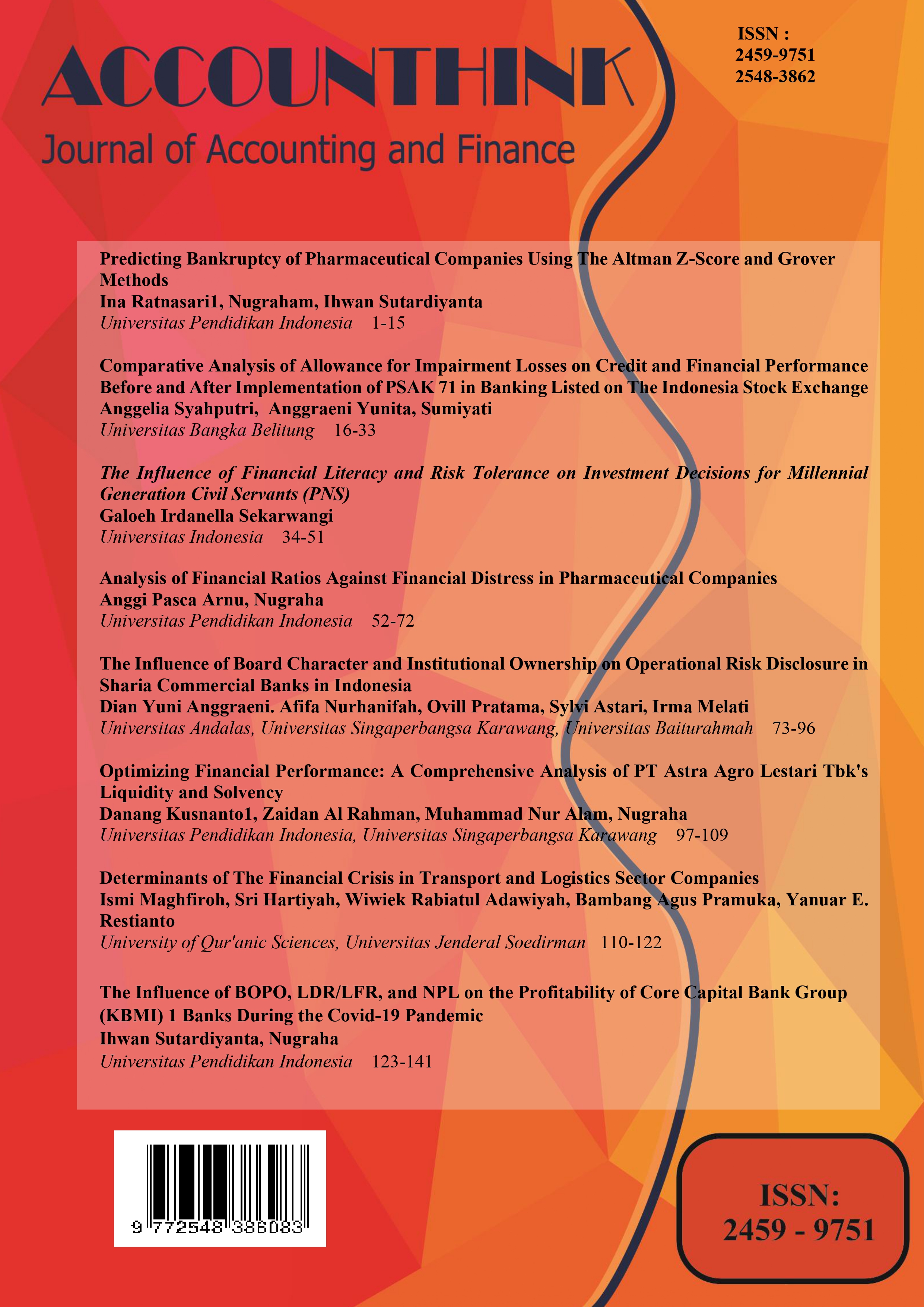Comparative Analysis of Allowance for Impairment Losses on Credit and Financial Performance Before and After Implementation of PSAK 71 in Banking Listed on The Indonesia Stock Exchange
Abstract
The Financial Accounting Standards Board from the Institute of Indonesia Chartered Accountants issued PSAK 71 on financial Instruments that adopt IFRS 9. Changes in the method of charging allowances for losses in PSAK 71 by using expected credit losses require banks to reserve credit losses from the beginning of the period. This can then impact financial performance, generally measured using financial ratios. This study examines and analyses differences in allowance for credit impairment losses, CAR, ROA, and LDR before and after PSAK 71. The population used in this study are banks listed on the Indonesia Stock Exchange. The sample was based on a purposive sampling technique to obtain as many as 35 banks. The analytical method is a comparative descriptive method, and the analysis technique of the average difference test of two paired samples is used. The results showed that there were significant differences in allowance for credit losses, CAR, ROA, and LDR between before and after the implementation of PSAK 71, which indicates that it has an impact on the amount of reserve for losses formed, capital adequacy bank, profitability, and liquidity risk.






